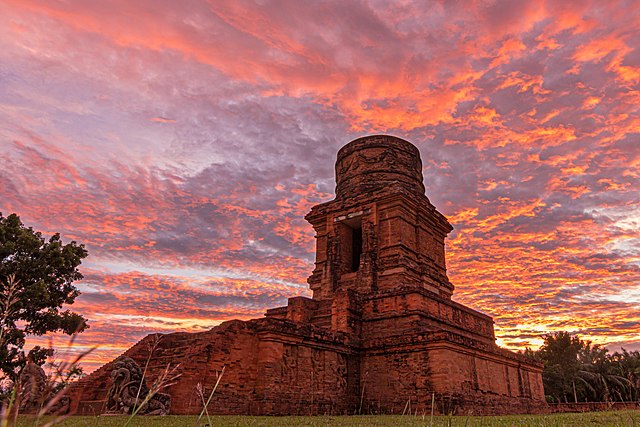Mount Sinabung is a Pleistocene-to-Holocene stratovolcano of andesite and dacite in the Karo plateau of Karo Regency, North Sumatra, Indonesia, 40 kilometres (25 mi) from the Lake Toba supervolcano. Many old lava flows are on its flanks and the last known eruption, before recent times, occurred 1200 years before present, between 740 - 880 CE. Solfataric activities were last observed at the summit in 1912; recent documented events include an eruption in the early hours of 29 August 2010 and eruptions in September and November 2013, January, February and October 2014. The volcano has recently claimed the life of at least 23 people in a number of events since 2014. Between 2013 and 2014, the alert for a major event was increased with no significant activity. On 2 June 2015, the alert was again increased, and on 26 June 2015, at least 10,000 people were evacuated, fearing a major eruption. The long eruption of Mount Sinabung is similar to that of Mount Unzen in Japan, which erupted for five years after lying dormant for 400 years. A major eruption began on 10 August 2020.

Sinabung in 2010
Mount Sinabung in 1940s
Mount Sinabung, March 20, 2010.
Mount Sinabung, April 23, 2013.
North Sumatra is a province of Indonesia located in the northern part of the island of Sumatra. Its capital and largest city is Medan. It is bordered by Aceh on the northwest and Riau and West Sumatra on the southeast, with two different coastlines located on the Indian Ocean and the Strait of Malacca, and a maritime border with Malaysia to the east. North Sumatra is Indonesia's fourth most populous province after West Java, East Java, and Central Java, and is also the most populous province outside of Java Island. North Sumatra is also the third-largest province in area on the island of Sumatra after South Sumatra and Riau provinces. It covers an area of 72,460.74 km2, which is approximately the same size as Sierra Leone or Scotland or Maine.
Darodaro or big stones (megaliths) that were hauled upwards and used as memorials by the Nias people in Bawomataluo village; this has been practised by people on the island since a thousand years ago
Situs Hopong in Dolok Sanggul, these stoned-statues sites are probably one of evidence of prehistoric Batak civilization
Chinese-shaped coin founded in Situs Kota Cina, Labuhan Deli presumably used for trading during the Yuan dynasty, 12 to 13th century
Bahal temple, also known as Portibi, is a Buddhist candi complex in Bahal village, North Sumatra. The temple site is linked to the Pannai Kingdom circa the 11th to 13th century CE.








